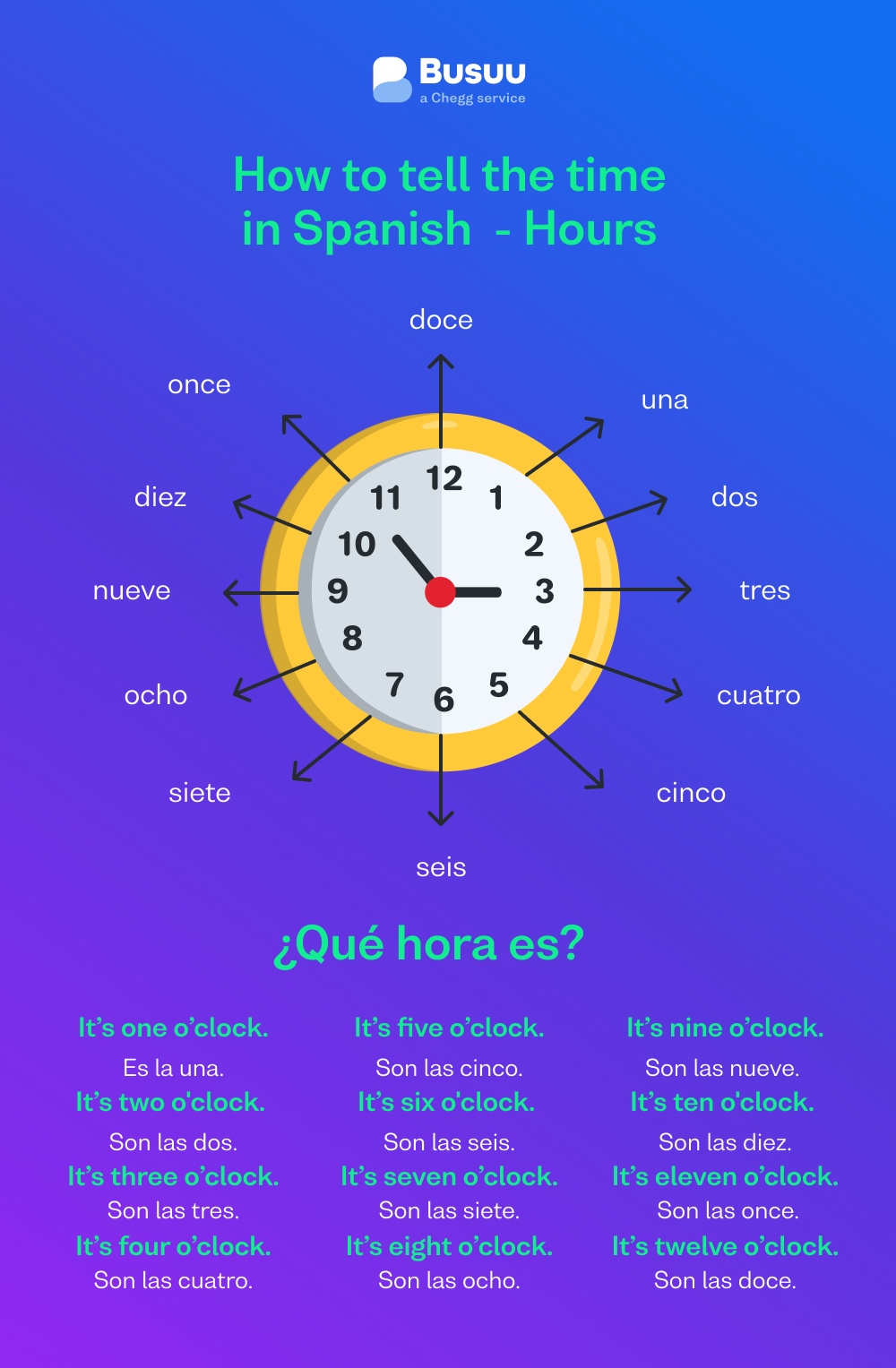The time in Spanish: a complete guide
Learn everything there is to know about how to tell the time in Spanish
Más vale tarde que nunca – Better late than never!
You'll have heard rumours that Spanish time operates on a different schedule to the rest of the world. Eating dinner at 10pm, taking a long lunch break, and arriving a little late to an event are perfectly normal in Spain.
So while knowing how to tell the time is an important skill in any language, time is especially important when you learn Spanish.
Spanish time telling will help you understand what time to check out at a hotel, when the next train leaves, or when to meet your friends at the bar.
So keep reading this complete guide to Spanish time, and by the end you’ll be up to speed on: How to ask for the time How to tell the time What time to make a dinner reservation in Spain
¡Vamos!
*It's worth noting that this page's content focuses on the Spanish spoken in Spain, not on the Spanish in Latin America. You may come across slight variations, depending on where you are in the world.
How to ask for the time in Spanish
Let’s start with the most important phrase when it comes to learning the time in Spanish:
- ¿Qué hora es? – What time is it?
If you’re out and about, and you want to ask someone for the time, simply ask politely:
- Disculpe, ¿qué hora es? – Excuse me, what time is it?
- ¿Tienes hora? – Do you have the time?
If you’re lucky, they may flash you the time on their phone or watch. But if they read out the time, keep reading to learn how to understand the answer!
How to tell the time in Spanish
Telling the time in Spanish is not too tricky, but there a few simple rules that will help:
- We use the verb ser (to be) when saying what time it is.
- If the time is one o’clock (or anytime between one o’clock and two o’clock), we give the time using es la... (it is...o’clock).
- For all other hours we preface the time with son las.
Let’s start with the hours in Spanish
- It’s one o’clock. – Es la una.
- It’s two o'clock. – Son las dos.
- It’s three o’clock. – Son las tres.
- It’s four o’clock.– Son las cuatro.
- It’s five o’clock. – Son las cinco.
- It’s six o’clock. – Son las seis.
- It’s seven o’clock. – Son las siete.
- It’s eight o’clock. – Son las ocho.
- It’s nine o’clock. – Son las nueve.
- It’s ten o’clock. – Son las diez.
- It’s eleven o’clock. – Son las once.
- It’s twelve o’clock. – Son las doce.

In spoken Spanish, the less formal twelve-hour clock is used, while the 24-hour clock is more common in written Spanish. However, Spanish doesn’t have AM and PM, so to make it clear which time you mean, you can add the following phrases after the time:
- de la mañana – in the morning. Used for times theoretically before midday, but in practice, before lunch.
- de la tarde – in the afternoon. Used for times in the afternoon.
- de la noche – in the night. Used for times in the evening.
- de la madrugada. Used for times very early in the morning or very late night – an important one for party animals to learn!
When the clock shows 12:00, you would say:
- mediodía – midday/noon
- medianoche – midnight
Moving on to the minutes in Spanish
But of course, the clock doesn’t always land precisely on the hour. This is how you say the minutes in Spanish:
- y cinco – five past
- y diez – ten past
- y cuarto – quarter past
- y veinte – twenty past
- y veinticinco – twenty-five past
- y media – half past
- menos veinticinco – twenty-five to
- menos veinte – twenty to
- menos cuarto – quarter to
- menos diez – ten to
- menos cinco – five to
- en punto – exactly/o’clock
Check out these examples:
- It’s 1:30. – Es la una y media.
- It’s 7:15. – Son las siete y cuarto.
- It’s 11:55. – Son las doce menos cinco.
If the time falls somewhere in between and you want to be specific, you can simply read out the numbers as they are on the clock:
- It’s 3:12. – Son las tres y doce.
- It’s 4:44. – Son las cuatro cuarenta y cuatro.
- It’s 11: 58. – Son las once cincuenta y ocho.
Want to brush up on your Spanish numbers?
Try learning with Busuu – our award-winning language learning app is like having a Spanish profesor in your pocket.
Now you know how to ask and tell the time in Spanish, there’s one last thing you should probably know when it comes to Spanish time.
In Spain, life happens at a much slower pace. This means a typical day might be quite different to what many people living in busier cities are used to.
- 7:30am - Despertarse – Wake up
- 8:30am - Empezar a trabajar – Go to work
- 2pm - Comer – Eat (lunch)
- 4pm - Trabajar – Work
- 6pm - Salir del trabajo – Leave work
- 10pm - Cenar – Eat dinner
- 10:30pm - Ver la tele – Watch TV
- Midnight - Acostarse – Go to bed
Learn time telling and other Spanish essentials with Busuu
Learning to tell the time is just one of the essential skills that Spanish learners can learn. Here at Busuu, our award-winning online Spanish course teaches you simple, everyday language you’ll actually use.